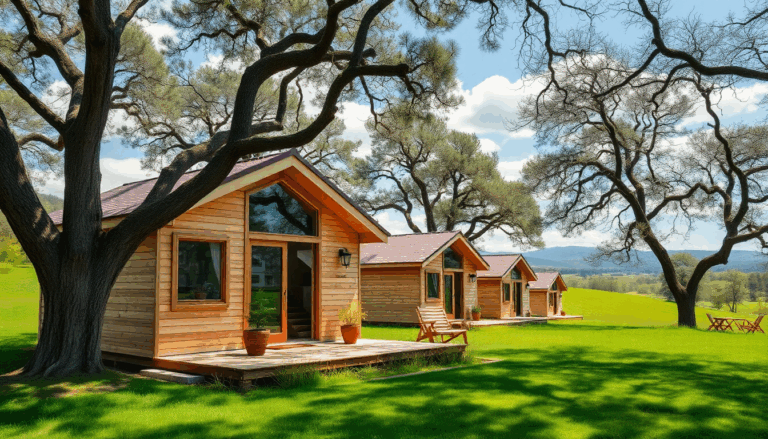The tiny house movement is more than just a trend; it’s a thoughtful response to the challenges of modern living that combines sustainability, affordability, and minimalism. In Italy, this movement is gaining momentum, pushing people to rethink their living situations in favor of a lifestyle that’s kinder to the planet. Imagine living in a cleverly
designed compact space that maximizes comfort while reducing your ecological footprint. In this article, we’ll explore the essence of tiny houses, diving into their cost-effectiveness, regulatory hurdles, and the growing interest in this lifestyle across the country.
A New Wave of Sustainable Living
Tiny houses are not just smaller versions of traditional homes; they symbolize a shift toward minimalism and environmental mindfulness. Ranging from
10 to 40 square meters, these homes are ingeniously crafted to make the most of every square inch for comfort and utility. Whether they’re mobile, like a cozy caravan, or anchored on a permanent foundation, tiny houses promote a philosophy of living with less—encouraging us to reconnect with what truly matters in life. Doesn’t that sound refreshing?
Originating in the United States in the early 2000s, the tiny house movement began as a reaction to the economic crisis and
rampant consumerism. Today, it represents a lifestyle choice for those looking to forge meaningful connections with their environments while minimizing their ecological impact. The appeal of a simpler life often leads to richer experiences, making it an alluring option for many. Could this be the life change you’ve been searching for?
Economic Opportunities and Business Cases
The tiny house trend saw a significant boost after the 2008 financial crisis, prompting many to rethink conventional housing options. In Italy, interest has surged more recently, particularly spurred by the pandemic and the rise of remote work. People are reevaluating their housing choices, and tiny homes are emerging as a financially sensible solution.
Many tiny homes are built with eco-friendly materials and designed to utilize renewable energy sources, contributing to a more sustainable lifestyle. According to the Tiny House Observatory in Italy, there’s been a remarkable 30% increase in tiny houses from 2021 to 2023, indicating a growing demand for alternative living solutions. Currently, estimates suggest there are between 5,000 and 10,000 tiny homes in Italy, with regions like Lombardy, Veneto, and Emilia Romagna leading the way. Isn’t it exciting to see such growth in sustainable living?
The affordability of tiny houses is one of their biggest draws. With prices starting at around €20,000 to €40,000 for basic prefabricated models, they offer an appealing option for young adults, students, and couples looking for their first home. Plus, the lower living costs align seamlessly with the minimalist lifestyle ethos. For many, moving into a tiny house could equate to embracing a more economical and simplified way of life. Are you ready to take the plunge?
Navigating Regulatory Challenges
Despite the rising popularity of tiny houses, regulatory challenges pose a significant obstacle. Currently, Italy doesn’t have a national framework specifically catering to these unique dwellings, leading to varying permit requirements across different municipalities. Depending on their construction and installation methods, tiny houses might be classified as mobile living units or prefabricated structures.
Potential tiny house owners should ensure that the land they have in mind complies with zoning regulations and doesn’t come with specific restrictions. Many municipalities require building permits or a SCIA (Certified Notification of Start of Activity) for permanent residential installations. Navigating this bureaucratic maze can seem daunting, but with the right preparation and professional advice, achieving your dream of owning a tiny house is definitely within reach.
Staying informed about local regulations and consulting with professionals can help streamline the bureaucratic process. By doing so, individuals can overcome obstacles and transition successfully to a lifestyle that harmonizes with nature. Wouldn’t it be amazing to live in a way that resonates with your values?
The Future of Tiny Living
In conclusion, tiny houses are emerging as an innovative and sustainable solution to today’s housing challenges. This lifestyle, characterized by simplicity and a profound connection to the environment, is rapidly gaining traction in Italy and attracting an ever-growing audience. If you’re considering this new way of living, it’s essential to focus on understanding local regulations and meticulously planning your tiny house project. Why not take a chance on a simpler existence that embraces both nature and sustainability? The possibilities are endless!

